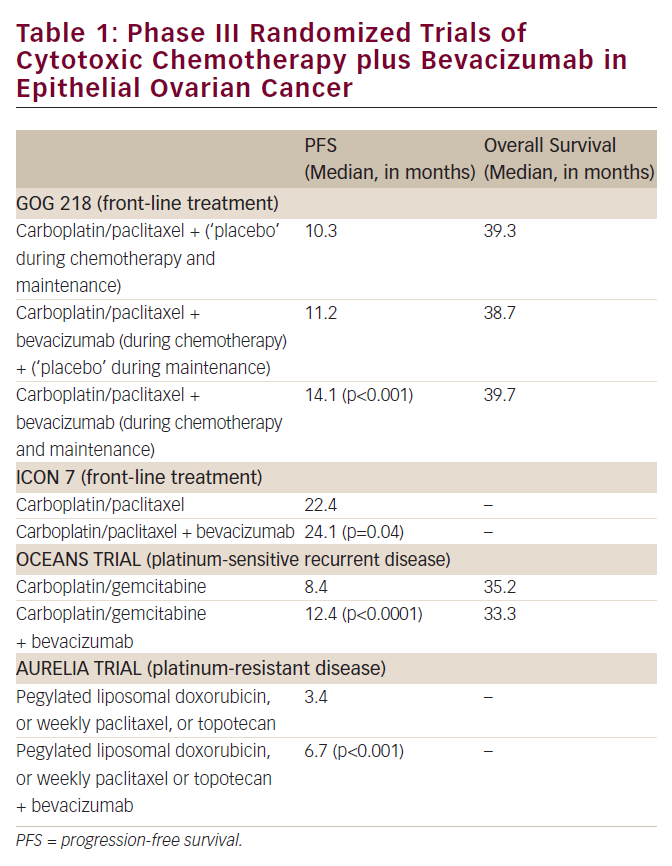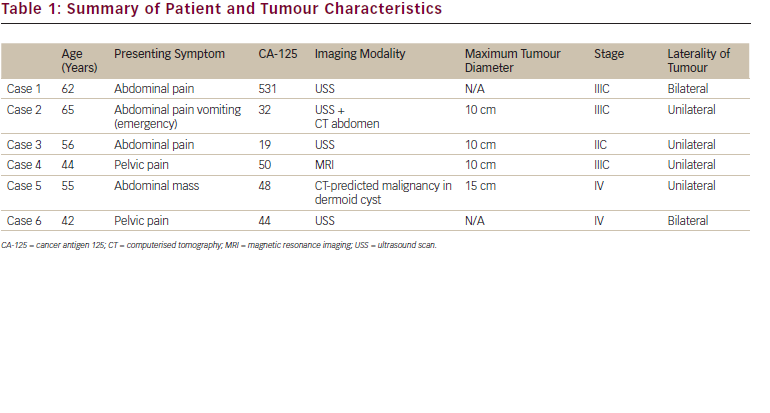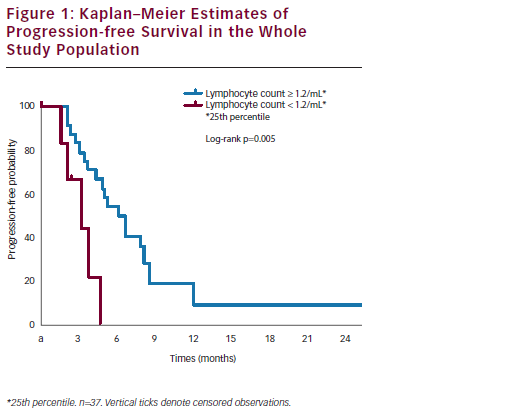Advanced stage appears to be a prognostic factor for decreased survival.4,9 However, few upstaged patients will receive adjuvant therapy because it has not been shown to improve clinical outcome.10,11 In a previous report of 93 women with ovarian LMP tumors, survival and recurrence rates were not significantly different between those who were staged and those who were unstaged.3 However, a recent survey of gynecological oncologists revealed that 97% advocate surgical staging.5 Our group performed a multicenter study to compare the outcome of surgically staged patients with LMP tumors with that of those who were not staged.12
Routine Surgical Staging
Routine pelvic and para-aortic lymph node dissection is not necessary in the majority of women with ovarian LMP tumors. In our study, only 1% of 832 submitted pelvic nodes had metastases and all 314 para-aortic nodes were negative. Pelvic nodal metastases upstaged only two (2%) of 118 patients undergoing lymph node dissection.12 Winters et al. have also recently challenged the utility of nodal sampling after observing nodal metastases in just three (6%) of 48 surgically staged ovarian LMP tumors.3 Camatte et al. reported nodal metastases in eight (19%) of 42 LMP patients undergoing lymphadenectomy. They noted a markedly increased frequency of metastases in the presence of enlarged nodes. All eight patients also had grossly evident invasive or noninvasive peritoneal implants. Importantly, none of the patients with early-stage disease— without gross peritoneal implants—had nodal involvement discovered by routine lymphadenectomy.13
In a meta-analysis of 97 studies including 4,129 patients, lymph node involvement in ovarian LMP tumors was associated with a 98% survival rate at 6.5 years.14 Nodal dissection may be indicated if invasive ovarian cancer cannot be ruled out or if nodes are palpably enlarged. However, complete surgical staging with pelvic and paraaortic lymph node dissection is not routinely performed in the majority of LMP tumors.7 Adjuvant Therapy
Surgically staged ovarian LMP patients do not appear to benefit from adjuvant therapy. Platinum-based chemotherapy effectively achieves surgically documented responses in patients with residual disease after primary surgery, but the survival benefit in an adjuvant setting remains unproved.10,11,15,16 The Gynecologic Oncology Group (GOG) conducted a prospective observation trial of 146 patients with surgical stage I serous LMP tumors not receiving adjuvant therapy. After a median follow-up of 42 months, there were no disease recurrences.17
A prospective trial of platinum-based adjuvant chemotherapy conducted by the GOG for 32 women with stage III LMP tumors concluded that the need for adjunctive therapy was speculative.10 In a Surveillance, Epidemiology, and End Results database study, 2,818 women with ovarian LMP tumors were analyzed. The 10-year survival of women with stage III disease was 96% and adjuvant chemotherapy was given to approximately 30% of women with stage III–IV disease. The authors concluded there were insufficient data to support a role for adjuvant chemotherapy for women with advanced disease.4 The indolent nature of ovarian LMP tumors is characterized by slow growth and late recurrences. As a result, most patients would not be expected to benefit from adjuvant chemotherapy.
Benefit of Surgical Staging
Women with mucinous LMP tumors are especially unlikely to benefit from aggressive surgical staging. In our study, none of the 57 staged mucinous LMP patients had metastatic disease.12 Rodriguez et al. described the outcome of 41 women who had borderline mucinous tumors. All had stage I disease that behaved in a clinically benign fashion.18 In addition, other studies have not identified nodal metastases in these patients.8,13 Mucinous LMP tumors are relatively infrequent and surgical staging is of limited value, but this histological type appears to be more prone to misinterpretation at frozen section.19 We identified two independent prognostic factors for recurrence: gravity and assigned stage category. Women with lower gravity and advanced stage were significantly more likely to recur. Lower gravity most likely predisposes to recurrence as many of these women underwent fertility-sparing surgery.12 Previous studies have shown a high (33–53%) rate of recurrence with this procedure, although death from disease is extremely rare.20,21 Advanced disease stage is a well-known risk factor for recurrence.22,23 Reasons for Surgical Staging
The inability to reliably exclude stromal invasion at the time of intraoperative frozen section is a recognized limitation in developing a consistent strategy for staging ovarian LMP tumors.19 Menzin et al. compared the accuracy of frozen section diagnosis with the final pathological interpretation in 48 patients. Thirteen (27%) were found to have focal, welldifferentiated invasive cancer in a background of low malignant potential neoplasia. The frozen section qualifying diagnosis of ‘at least’ LMP was more likely (41 versus 19%) to portend stromal invasion than LMP tumor or ‘rule out’ LMP tumor. In addition, the level of experience of the pathologist responsible for the frozen section did not influence the accuracy.24 In another retrospective review of 94 frozen section diagnoses of LMP tumors, 6% were subsequently changed to invasive carcinoma.19
The accuracy of intra-operative frozen section undoubtedly varies among pathologists and institutions. Buttin et al. observed a higher rate of recurrence in micro-invasive LMP tumors (23 versus 3.5%; p=0.023), but this association was not identified in our study (7 versus 5%).23 Complete surgical staging, including lymph node dissection, may be indicated when frankly invasive disease is suspected.
Surgical staging provides more accurate prognostic information at the cost of increased blood loss and prolongation of the post-operative hospital stay. We speculate that some staging procedures, most notably para-aortic node dissection, may result in longer operative time, greater morbidity and extended recovery. A recent survey of gynecological oncologists revealed that 97% advocate surgical staging of LMP tumors.5 However, only 12% of patients undergo complete surgical staging in current practice.7 Stage III ovarian LMP tumors have the same rate of recurrence whether or not they have peritoneal disease or lymph node metastases.23,25 Camatte et al. noted that, in their experience, all patients with lymph node metastases also had peritoneal implants.13
Conclusion
We advocate cytological washings, exploration, random peritoneal biopsies, and partial omentectomy without retro-peritoneal lymph node dissection in the absence of enlarged nodes or a frozen section suggestive of frankly invasive disease. A frozen section diagnosis of mucinous tumor is another reason to consider retro-peritoneal lymph node dissection, as many invasive mucinous tumors are often underdiagnosed.19 These procedures can be easily performed via laparoscopy or laparotomy without extending the incision or appreciably prolonging the operation. In addition, it is hard to justify routine surgical restaging for patients with a final pathological diagnosis of LMP ovarian tumor confined to a single ovary.26









